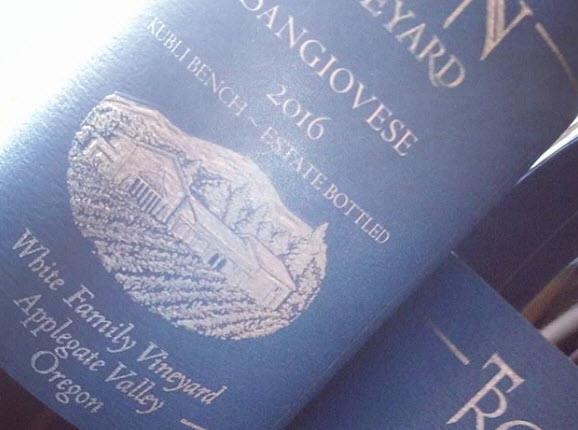
External search
Google (images)
Wine Advocate
Wine Spectator
Burghound
Wine-Searcher
Vintages
2016
From this producer
Show all wines
All tasting notes
|
| Drinking Windows and Values |
| Drinking window: not specified |
| Community Tasting History |
| Community Tasting Notes (average 91.5 pts. and median of 91 pts. in 2 notes) - hiding notes with no text | | | Tasted by The Drunken Cyclist on 9/14/2018 & rated 92 points: Retail $25. Very light in the glass, a translucent crimson with numerous red (cherry, raspberry) and black (black cherry, blackberry, plum) fruit populating the nose. The palate is nothing short of joyous with a defining tartness, mounds of said fruit, but also plenty of depth, and a finish that lingers. This is not a blockbuster wine—it will not bowl you over. It is more of a subtle beauty that requires, if not demands, introspection. For short-term drinking, but this is a gem.
http://www.thedrunkencyclist.com (160 views) | | | Tasted by isaacjamesbaker on 4/9/2018 & rated 91 points: Light ruby color. Bright aromas of chilled strawberries and red cherries, mixed with rose petals, violets, sage, wild herbs. Crisp acidity frames the palate so nicely on this medium-bodied wine (12.5% alcohol), dusty/light tannins. Bright cherries, raspberries, red apple fruit, topped with roses, clove, cinnamon, earth, soy and white pepper. A refreshing, brisk but serious Sangiovese. (360 views) |
| Troon Vineyard Producer websiteSangioveseSANGIOVESE: (Pronounced "sahn-joh-vhe-se").
Sangiovese - Italy's claim to fame, the pride of Tuscany. Traditionally made, the wines are full of cherry fruit, earth, and cedar. It produces Chianti (Classico), Rosso di Montalcino, Brunello di Montalcino, Rosso di Montepulciano, Montefalco Rosso, and many others. Sangiovese is also the backbone in many of the acclaimed, modern-styled "Super-Tuscans", where it is blended with Bordeaux varietals (Cabernet Sauvignon, Merlot, and Cabernet Franc) and typically aged in French oak barrels, resulting a wine primed for the international market in the style of a typical California cabernet: oaky, high-alcohol, and a ripe, jammy, fruit-forward profile.[16]
Semi-classic grape grown in the Tuscany region of Italy. Used to produce the Chianti and other Tuscan red wines. Has many clonal versions, two of which seem to predominate. The Sangiovese Grosso clone Brunello variety is used for the dark red, traditionally powerful and slow-maturing "Brunello di Montalcino" wine. The other is the Sangiovese Piccolo, also known under the historical synonym name Sangioveto, used for standard Chianti Classico DOC wines. Old vine derived wine is often used in the better versions, needing several years ageing to reach peak. A third clone, Morellino, is used in a popular wine blend with the same name found in the southern part of the province. Recent efforts in California with clones of this variety are very promising, producing medium-bodied reds with rich cherry or plumlike flavors and aromas. Among the available clonal versions are R6 and R7, derived from the Montalcino region of Italy, having average productivity/ripening and producing small berries on medium size clusters. R10 and R24 are well-recommended. R23, listed as deriving from the Emilia-Romagna region, has good vigor with medium-small clusters with earlier ripening. R102 derives from the Montepulciano region and reported to have average vigor with moderate productivity that results in higher sugar levels and good acidity from medium-small berries on medium-small clusters. Has synonym name of Nielluccio where grown in Corsica.USAAmerican wine has been produced since the 1500s, with the first widespread production beginning in New Mexico in 1628. Today, wine production is undertaken in all fifty states, with California producing 84% of all U.S. wine. The continent of North America is home to several native species of grape, including Vitis labrusca, Vitis riparia, Vitis rotundifolia, and Vitis vulpina, but the wine-making industry is based almost entirely on the cultivation of the European Vitis vinifera, which was introduced by European settlers. With more than 1,100,000 acres (4,500 km2) under vine, the United States is the fourth-largest wine producing country in the world, after Italy, Spain, and France.Oregon Oregon Wine, Oregon Wineries (Oregon Wine Board) |
|


